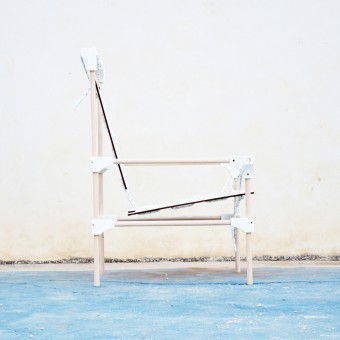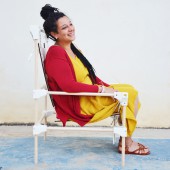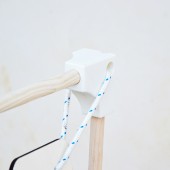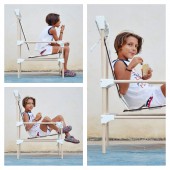
| THE AWARD |
| CATEGORIES |
| REGISTRATION |
| SUBMIT YOUR WORK |
| ENTRY INSTRUCTIONS |
| TERMS & CONDITIONS |
| PUBLICATIONS |
| DATES & FEES |
| METHODOLOGY |
| CONTACT |
| WINNERS |
| PRESS ROOM |
| GET INVOLVED |
| DESIGN PRIZE |
| DESIGN STORE |
| THE AWARD | JURY | CATEGORIES | REGISTRATION | PRESS | WINNERS | PUBLICATIONS | ENTRY INSTRUCTIONS |
La Smilza Darwinian Chair by Martina Taranto |
Home > Winners > Design #51215 >Interview |
 |
|
FS: What is the main principle, idea and inspiration behind your design?
MT: The entire project is based on a critic analysis about the evolution of designers in a more democratic way of producing and consuming objects.
FS: What has been your main focus in designing this work? Especially what did you want to achieve?
MT: I wanted it to be easy to build, beautiful and cheep! A project for everybody's home. Highly customisable and fun.
FS: What are your future plans for this award winning design?
MT: I would like it to be know and used around the world.
FS: How long did it take you to design this particular concept?
MT: The entire process took 9 months.
FS: Why did you design this particular concept? Was this design commissioned or did you decide to pursuit an inspiration?
MT: Both. I was working with Fondazione Achille Castiglioni, they asked for a chair and then we tried to follow Castiglioni's experience and attitude in the design process.
FS: Is your design being produced or used by another company, or do you plan to sell or lease the production rights or do you intent to produce your work yourself?
MT: It's thought not to be produced with the common industrial process. It made to be produced only when needed to decrease the impact of consumerism.
FS: What made you design this particular type of work?
MT: It was my graduation project.
FS: Where there any other designs and/or designers that helped the influence the design of your work?
MT: Yes, Achille Castiglioni and William Morris' work.
FS: Who is the target customer for his design?
MT: Everyone, it's made to be adaptable.
FS: What sets this design apart from other similar or resembling concepts?
MT: It's not my job to tell. People with their perception will tell.
FS: How did you come up with the name for this design? What does it mean?
MT: It means thin. It's because of the light frame.
FS: Which design tools did you use when you were working on this project?
MT: Rhinoceros, Cura, 3D printers, Laser cutter, Hammer, screws...
FS: What is the most unique aspect of your design?
MT: To be minimal and essential.
FS: Who did you collaborate with for this design? Did you work with people with technical / specialized skills?
MT: I worked with University professors and rapid prototyping technicians.
FS: What is the role of technology in this particular design?
MT: Essential.
FS: Is your design influenced by data or analytical research in any way? What kind of research did you conduct for making this design?
MT: All sort of research. Semiotic, Social, Historical, Artistic, Technical, Scientific...
FS: What are some of the challenges you faced during the design/realization of your concept?
MT: Avoiding the structure from collapsing.
FS: How did you decide to submit your design to an international design competition?
MT: To challenge my skills.
FS: What did you learn or how did you improve yourself during the designing of this work?
MT: I became more aware of the effort and the responsibilities link with the designer job.
FS: Thank you for providing us with this opportunity to interview you.
A' Design Award and Competitions grants rights to press members and bloggers to use parts of this interview. This interview is provided as it is; DesignPRWire and A' Design Award and Competitions cannot be held responsible for the answers given by participating designers.
| SOCIAL |
| + Add to Likes / Favorites | Send to My Email | Comment | View Press-Release |




